Dear @jyoti.grg,
I have run your input with 30 million primaries after having add a few USRBINs to it.
I added a large Cartesian USRBIN to look at the particle fluence:
USRBIN 10. ALL-PART -24 50 50 60ap
USRBIN -50 -50 20 100 100 40 &
At first, I checked that your source was as I was expecting it (i.e. source made of 40 rods). I plot in the geoviewer the large Cartesian USRBIN on a x-x plane and at z=20.5

This seemed to me quite reasonable and shows well a radial symmetry.
Then I looked at the particle fluence at z=56.5 again on the x-y plane:

This clearly indicates that the problem has lost its radial symmetry.
Naturally, the same appears also if I look at the ambient dose equivalent rate:

In this case I have added a dedicated Cartesian USRBIN:
USRBIN 10. DOSE-EQ -23 50 50 58.xyz
USRBIN -50 -50 56. 100 100 1. &
In order to understand what was going on, I looked then again at the particle fluence, but this time on the y-z plane and setting x to correspond to the hot spot I had seen before:
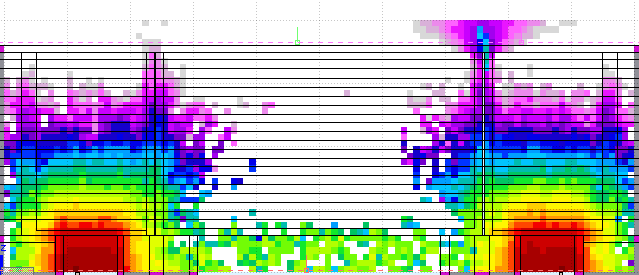
As can be expected, the lead and stainless steel provide a good shielding and very little particle go through. The radiation escapes more easily through the small air gaps. Here, we can even see that an interaction takes place close to the end of the gap and this generates some extra shower (remember that we’re just looking at the particle fluence).
At this point, it’s possible to draw an important conclusions: my simulation (30 million primaries) clearly doesn’t have enough statistics.
This can be seen also with plots in the plot tab. First I plotted the ambient dose equivalent rate:
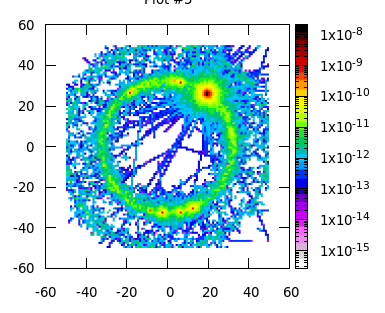
and then I plot the uncertainty on it:

From this last plot, one can infer 2 things:
1-in the ring around the gap, the statistical uncertainty around 50%
2-the hot spot has an uncertainty of almost 100%, which means it’s caused by a fluctuation.
I had also added some R-PHI-Z USRBIN scorings, with a different number of radial bins:
USRBIN 11 DOSE-EQ -23 50 0 58.rphz90
USRBIN 0 0 56. 50 90 1. &
USRBIN 11 DOSE-EQ -23 50 0 58.rphz12
USRBIN 0 0 56. 50 12 1. &
In this way I could still check the radial symmetry while exploiting the symmetry of the experimental setup:
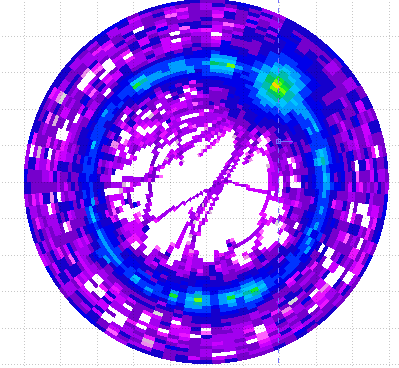
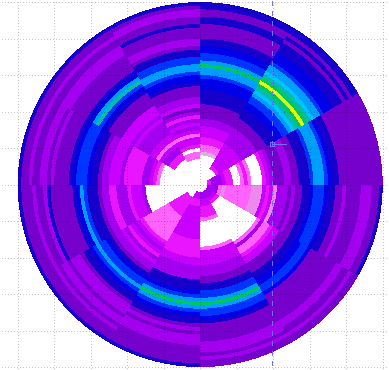
I also added 1 R-PHI-Z scoring with a single angular bin:
USRBIN 11 DOSE-EQ -23 34 0 58.rphz1gap
USRBIN 31 0 56. 30 1 1. &
which I can of course plot with an extreme zoom (over different planes)

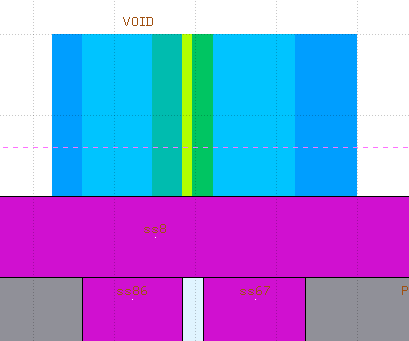
but most interestingly, I can plot over 1 dimension:
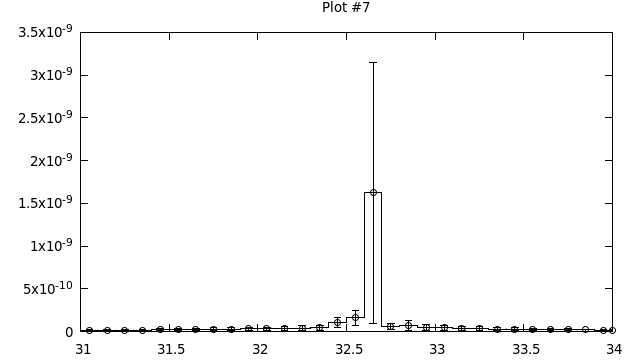
which also indicates that my simulation doesn’t have enough statistics.
Now, let’s go back to your simulations and your results:
-
I don’t know how many primaries you ran, but I would say that they were not enough. You need to improve the statistics over your Region Of Interest, either increasing the number of primaries or in some other ways.
-
In this case, using a USRBIN which has 1 bin over 2 coordinates is not a commendable thing to do. You are not gaining anything in terms of CPU time, on the contrary you are losing the data and the opportunity to monitor the overall behavior of your simulations. Using such USRBIN to claim that the system lacks of symmetry is pointless.
-
Using a R-PHI-Z USRBIN allows to exploit the radial symmetry of the system and somewhat to reduce the statistical uncertainty.











